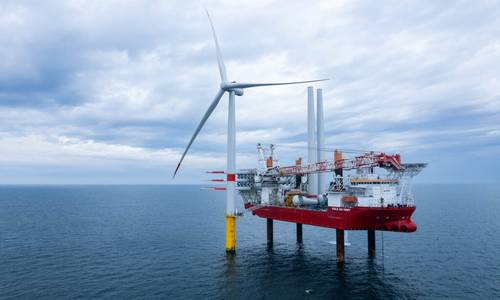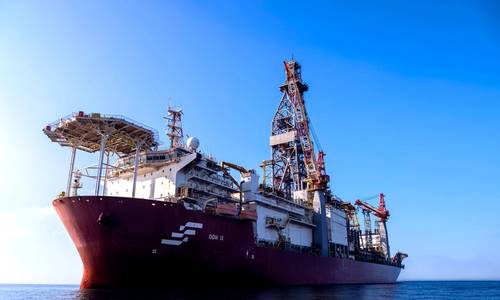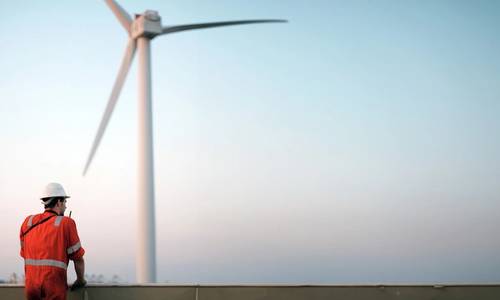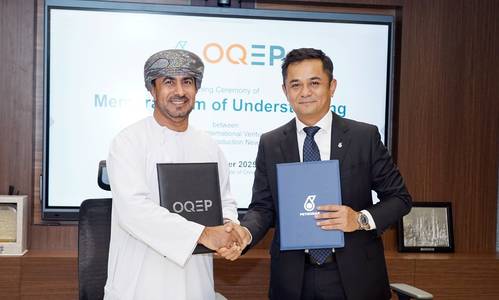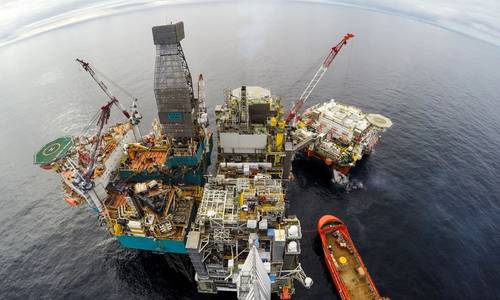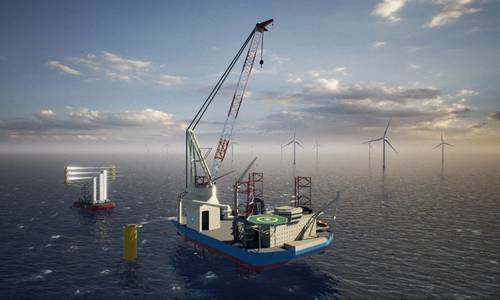Subsea Compression and the Ormen Lange Moon Landing
by Josefine Spiro
October 22, 2025
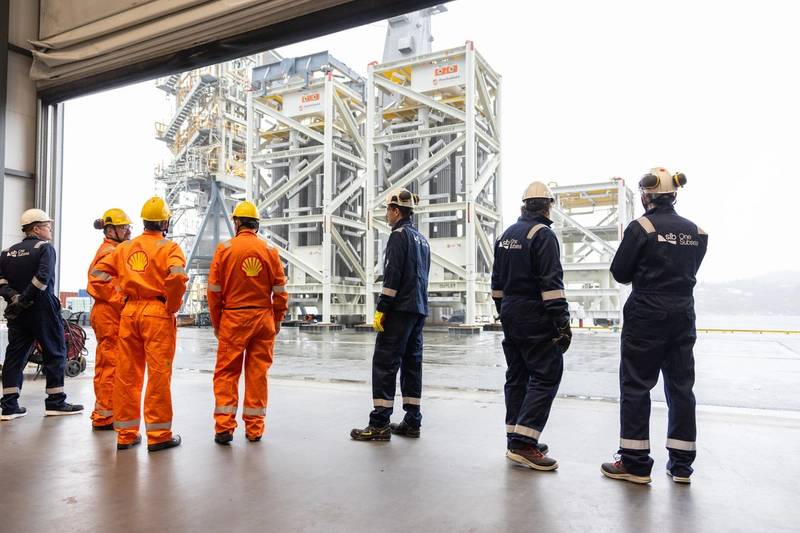
The inauguration of a world-record subsea compression system in Norway in August 2025 marked a pioneering leap in engineering. Yet according to OneSubsea CEO Mads Hjelmeland and Project Director at Shell, Richard Crichton, its success hinged on one key ingredient: the close collaboration between operator Shell and the delivery alliance of OneSubsea, Subsea7, and Aker Solutions.
This collaborative culture was put to its ultimate test in early 2023, at a test facility on Horsøy, an island outside Bergen. Here, the engineering team gathered for the first full-power run of the Ormen Lange Phase 3 subsea compression system. It was a pivotal moment in the multi-billion-dollar project, the culmination of five years of intensive work since the contract was awarded in October 2019. A massive 800-tonne compression station, submerged in a test pit, were connected to a simulator designed to mimic the 120-kilometer distance from the onshore gas plant at Nyhamna.
“The tension level in the room was quite high as we prepared to press the button for the first time. When we did and nothing happened, the anxiety rose even more,” said Mads Hjelmeland, CEO of OneSubsea.
That tense moment became emblematic of the Ormen Lange Phase 3 project. The resolution - diagnosing and fixing a software bug - was a testament not just to world-record engineering, but to a collaborative culture that Hjelmeland believes was essential to the project's outcome. The groundwork laid during that onshore test led to a remarkably smooth startup offshore, a success echoed by Shell's Project Director at the Ormen Lange Phase 3 project, Richard Crichton. "When we carried out the final commissioning, it only took us 20 days from starting the compressors until we reached full power, which is quite extraordinary," he said.
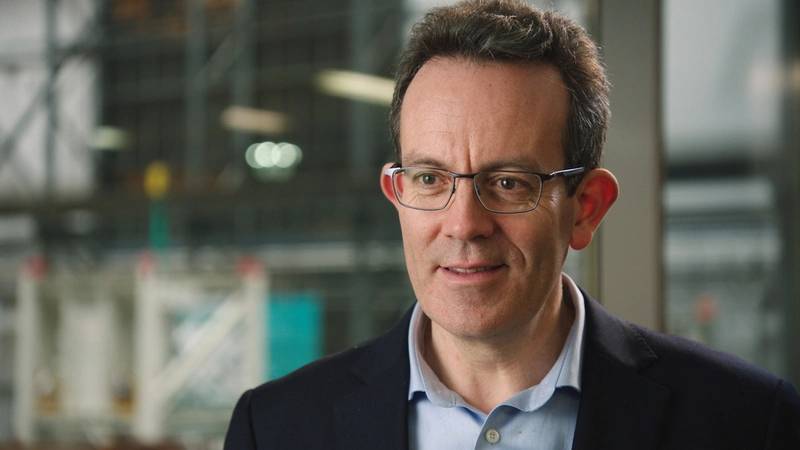 Richard Crichton, Project Director at Ormen Lange, Shell (Credit: Shell)
Richard Crichton, Project Director at Ormen Lange, Shell (Credit: Shell)
The Inevitable Challenge
The Ormen Lange field, Norway's second-largest gas field, has been a cornerstone of Europe's energy supply for over two decades. After years of production, however, the natural reservoir pressure was steadily declining, making it increasingly difficult to recover the remaining gas volumes. This presented Shell, OneSubsea and their partners with a significant challenge: how to maximize recovery and extend the life of a critical deepwater asset.
The mandate from the Norwegian government was established in the early 2000s, reflecting a forward-thinking approach to resource management. When the field’s initial Plan for Development and Operation was approved, it included a specific condition that the operator must do everything possible to maximize recovery. “Subsea compression was set as a requirement when the time was ripe,” Hjelmeland said. When that time came, two main concepts were evaluated: a conventional floating platform and an advanced subsea compression system. After rigorous assessments, Shell and its partners concluded that the subsea option was superior, promising a higher recovery rate, greater energy efficiency, and a more favorable investment cost.
Cracking the “Impossible” Nut
The project’s defining technical challenge was the 120-km step-out distance, which set a new world record for power transmission to a subsea compression system. “The longest distance we had delivered on similar systems before was around 35 kilometers,” Hjelmeland said, adding that there was considerable skepticism from some within the industry during the early verification phase. “There were people at the time who said this was not possible,” he recalled.
The technical crux was the power and control umbilical and the placement of the variable frequency drive (VFD) 120 kilometers away from the motor and its controls. To de-risk this, the alliance built a full-scale simulator of the umbilical and connected it to the actual subsea system for extensive onshore testing. “This is a unique capability that gives us the confidence to tell our partners that even if the technology is new, we can verify it together,” Hjelmeland said. It was this achievement that he described as the project’s "moon landing" moment - proving the impossible was, in fact, possible.
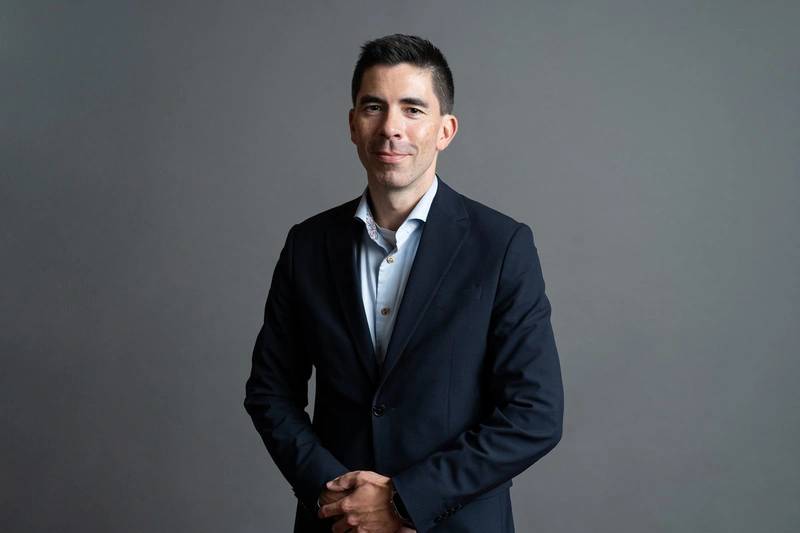 Mads Hjelmeland, CEO, OneSubsea (Credit: OneSubsea)
Mads Hjelmeland, CEO, OneSubsea (Credit: OneSubsea)
Psychological Safety was Key
While the technology was groundbreaking, Hjelmeland emphasized that the project’s success was equally dependent on its collaborative framework. Facing unforeseen challenges like the COVID-19 pandemic and geopolitical turmoil, the alliance between OneSubsea, Shell, Subsea7, and Aker Solutions functioned as a single, integrated team.
“What I really want to emphasize is the ‘soft’ side of the collaboration,” Hjelmeland stated. From the outset, the partners established a clear platform for how they would work together, moving beyond a traditional client-contractor relationship.
A key tool introduced by Shell was the “learner mindset”.
"As things emerge or incidents occur, we take a step back and learn from these events. That is the essence of the entire collaboration," explained Shell's Project Director, Richard Crichton, who championed the philosophy. He said the goal was to build such a high level of trust that the lines between companies would blur into a true 'one team' approach. "In the end, you can't tell if someone works for Shell or for OneSubsea," Crichton stated. "That's when you get real collaboration."
Underpinning this was a foundation of psychological safety—the assurance that team members could report bad news unfiltered, without fear of blame. "A 'blame game' about why something didn't work would simply not have worked," Crichton noted. This sentiment was shared by Hjelmeland. “I believe a large part of the success was because we managed to break down the barriers in the commercial framework and share information openly,” he asserted. “I don’t think we would have succeeded without this collaboration”.
A New Benchmark
From the tense moment of the initial failed test at Horsøy, the project culminated in a seamless inauguration on August 26, 2025. This success established several new industry benchmarks. It’s the world’s first subsea processing project that completely removes the need to build and maintain a platform, a true subsea-to-beach solution. Moreover, its 120-kilometer step-out distance from shore sets a new world record for power transmission to a subsea compression system. By providing compression energy close to the reservoir, the technology increases the recovery rate in Norway's second-largest gas field from 75% to a world-class 85%. This unlocks an additional 30 to 50 billion cubic meters of gas, which is enough to power all households in a city the size of Barcelona, and could generate up to 70 billion NOK in additional revenue for the Norwegian state.
Powered by Norwegian hydropower and processed in a closed system, the facility also has one of the lowest carbon footprints per unit of energy in the world. The legacy of Ormen Lange Phase 3 is a proven toolkit that is now replicable globally.
“The first lesson is technology,” Hjelmeland concluded. “Subsea processing has enormous value. The second is the new way of working—in partnership, with a learner mindset. Taking this lesson with us, together with our technology portfolio, makes the future very exciting”.
Explore the latest edition of Offshore Engineer Magazine which features the piece 'Subsea Compression and the Ormen Lange Moon Landing' by Josefine Spiro, and many more provided by leading industry experts and journalists.

